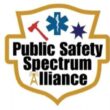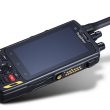Rebanding effort gets a Band-Aid
A new program designed to let subscriber-unit work begin earlier should accelerate progress in the 800 MHz rebanding effort, but participants expressed doubt that the massive project can be completed this decade.
In negotiations between Sprint Nextel and public-safety licensees, the parties typically are able to agree on the manner in which subscriber equipment will be reconfigured more quickly than issues involving network infrastructure. However, under the previous guidelines, rebanding work on the subscriber equipment could not begin until after the complete rebanding agreement was finalized — often resulting in a time lapse of several months, as the overwhelming majority of NPSPAC licensees entered the mediation process.
Under the new subscriber equipment deployment (SED) initiative developed by the Transition Administrator, licensees will be given the opportunity to retune mobile and portable radios prior to the completion of all negotiations with Sprint Nextel, said TA spokesman Bryan Cloar.
After significant discussions with Sprint Nextel, licensees and industry vendors, the TA has established a standard level of effort (LOE) for each potential task involved in rebanding subscriber equipment. Each effort level — for instance, the amount of time to install new software in a radio — is multiplied by the payment rate of those involved in the work to determine the amount Sprint Nextel would pay.
“If the licensee submits that request and their activities fall within the standard levels of effort that we’ve provided, then the expectation is that Sprint Nextel and the licensee will enter into an agreement without further negotiations,” Cloar said.
But a licensee’s level of effort does not have to be within the standard LOE threshold to participate in the SED program, Cloar said. If a licensee’s level of effort exceeds the TA thresholds, the licensee can submit justifications for the difference. As soon as the justification is accepted by Sprint Nextel and the TA, or negotiated to all parties’ satisfaction, the licensee can begin deploying the subscriber equipment, Cloar said.
With the SED program, many public-safety licensees will see their negotiations with Sprint Nextel expand to three phases — a planning-funding agreement, a subscriber deployment agreement that would serve as the first phase of the FRA, and an infrastructure-focused agreement that would complete the FRA. Participation in the SED program is optional, but the TA believes the program will be beneficial to a majority of NPSPAC licensees, Cloar said.
The TA’s announcement of the SED initiative was welcome news to vendor Motorola, which in mid-March had shipped only about 2000 of the several hundred thousand software kits and radios the company expects to deliver during the rebanding process, said Chuck Jackson, Motorola’s vice president and director of system operations.
Also applauding the move was Steve Proctor, executive director of the Utah Communications Agency Network (UCAN). As of press time, UCAN was about to submit its FRA proposal to Sprint Nextel, but the statewide licensee already has completed two subscriber deployments and has two more of these efforts under way.
“I’ve got to say that is a piece of brilliance to get started on those [subscriber units],” Proctor said. “Those are easy, and you know what radios have got to be changed, so why not do them now?”
But all the benefits of the SED program will not accelerate rebanding enough to meet the June 2008 deadline, especially given the fact that several key issues — most notably, the need for international treaties addressing the Canadian and Mexican borders.
“It’s pretty clear this isn’t going to be done in 36 months, and I think adding two years to it is still pretty optimistic to get everything done, with all of the loose ends we have,” Jackson said.













